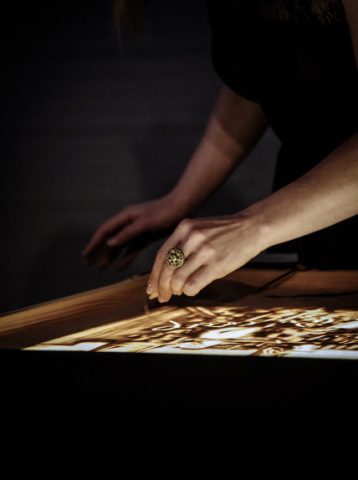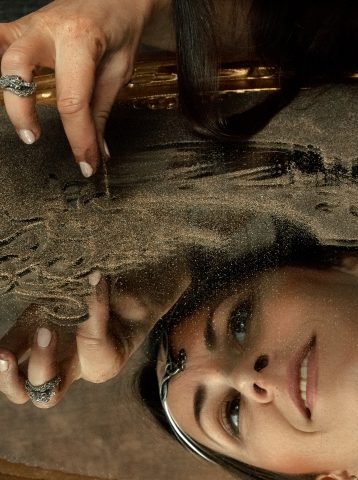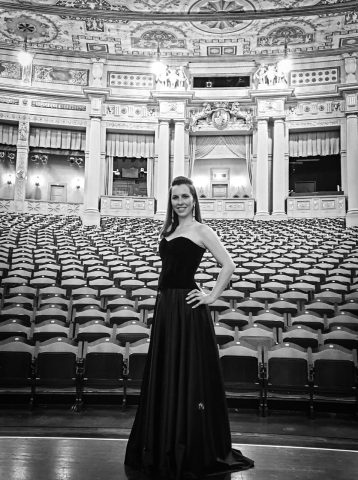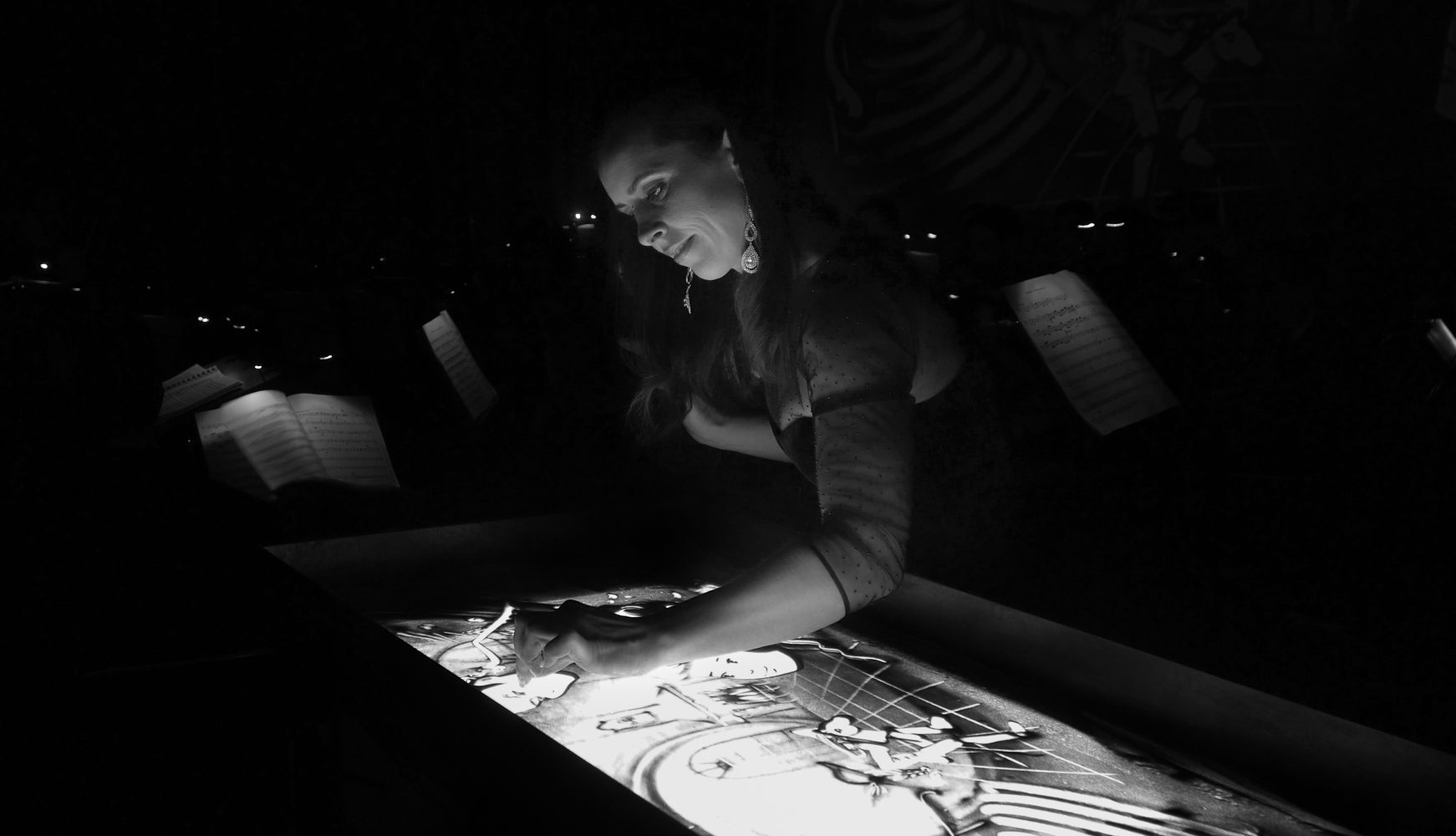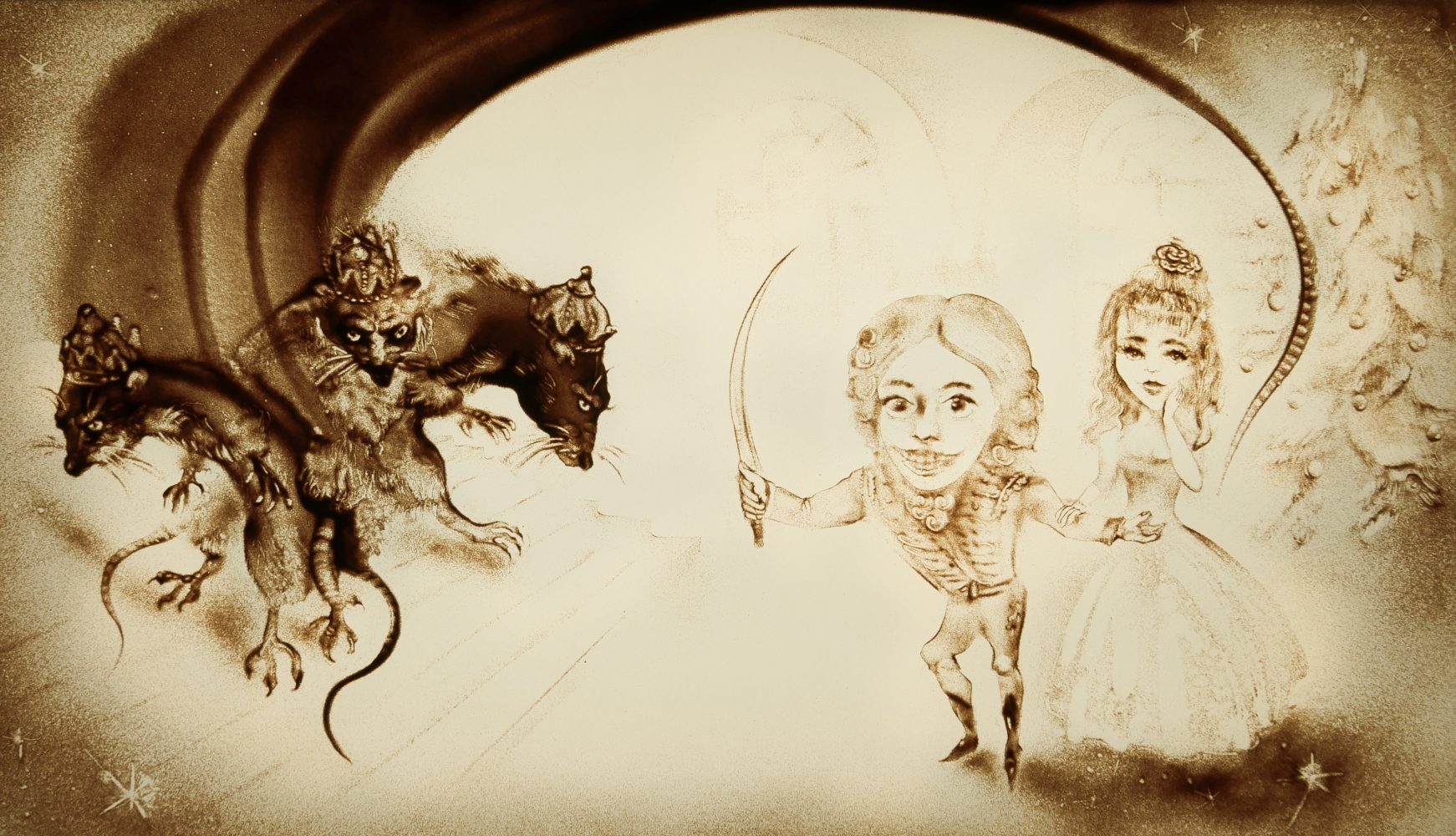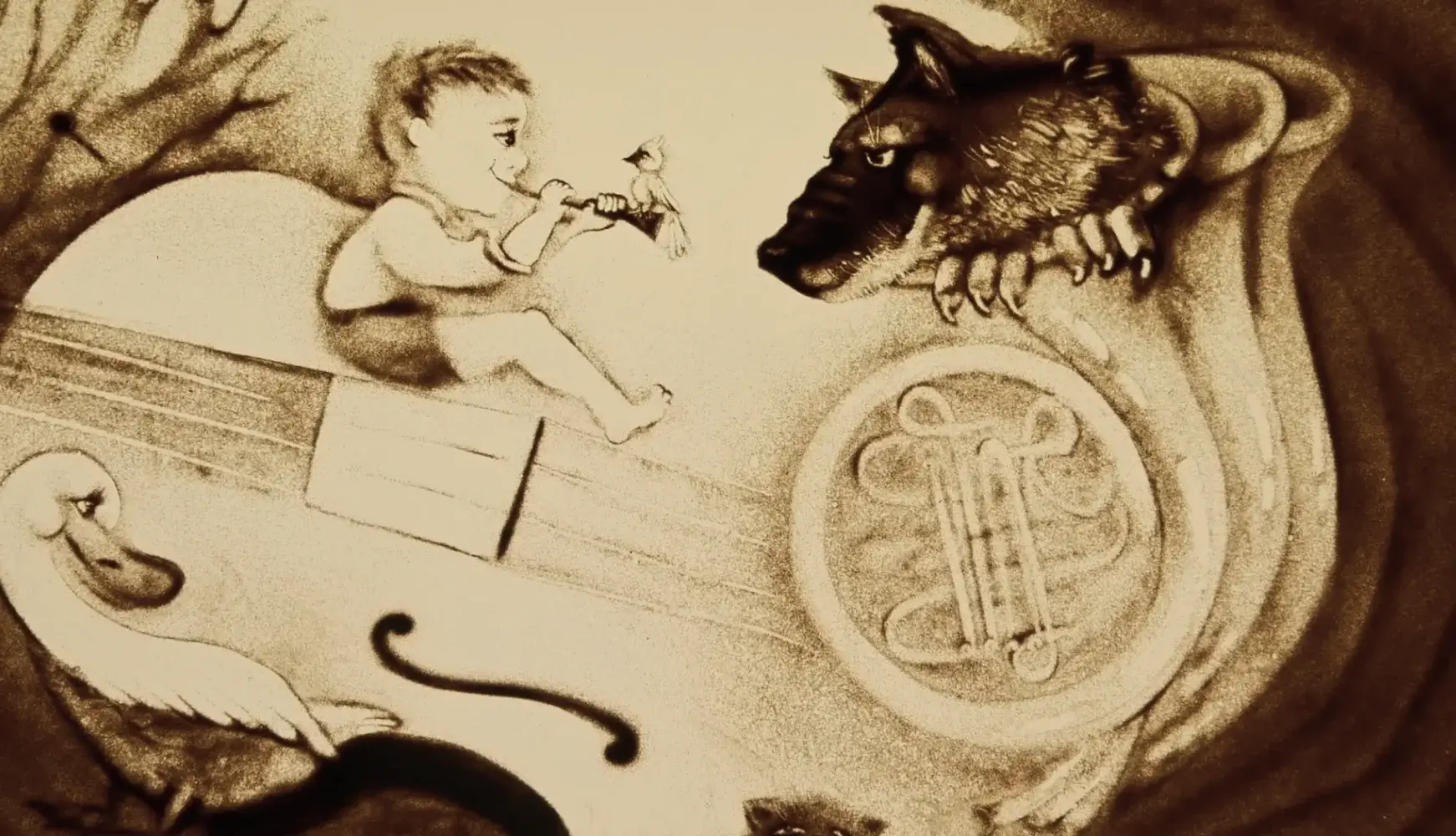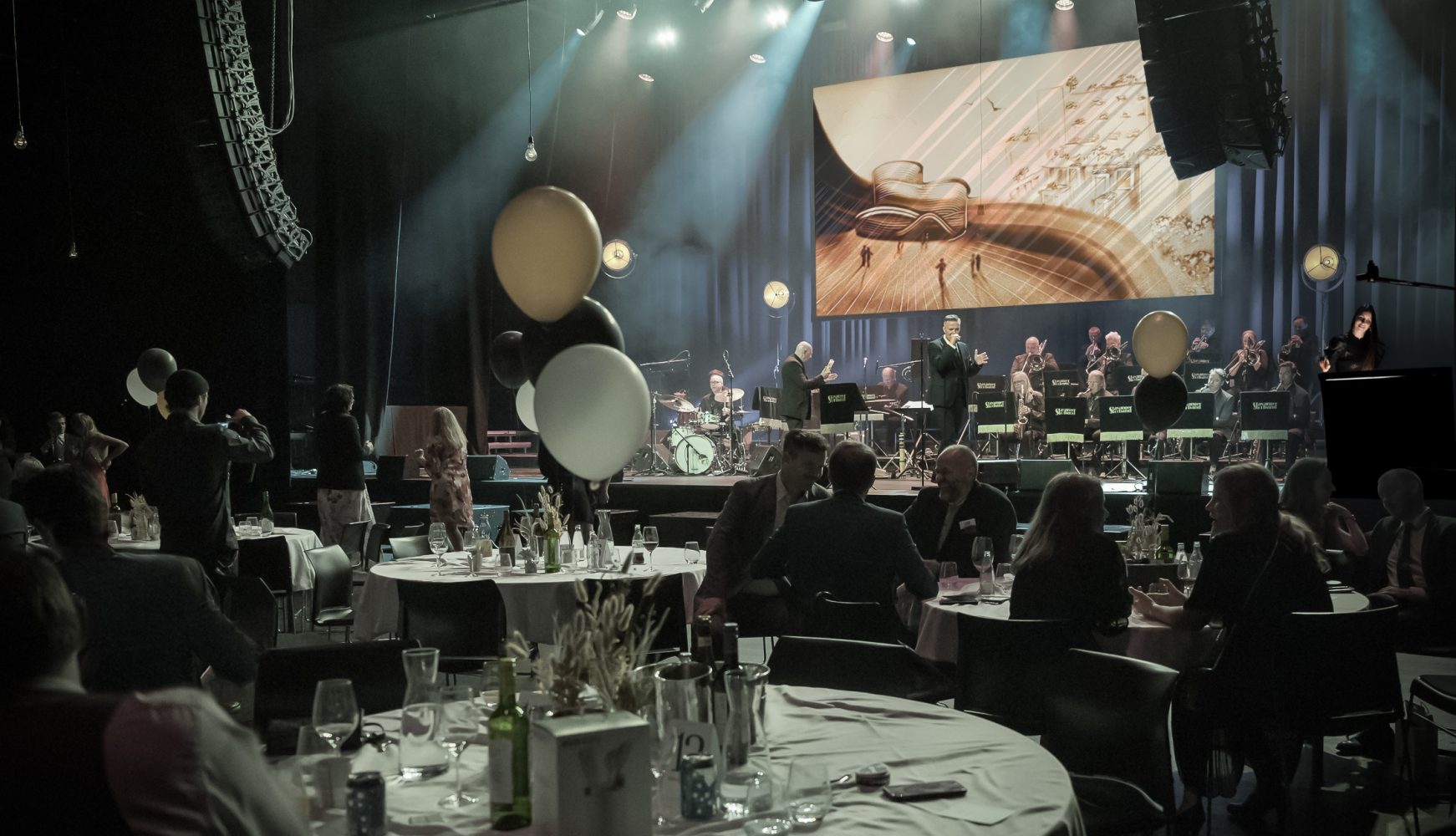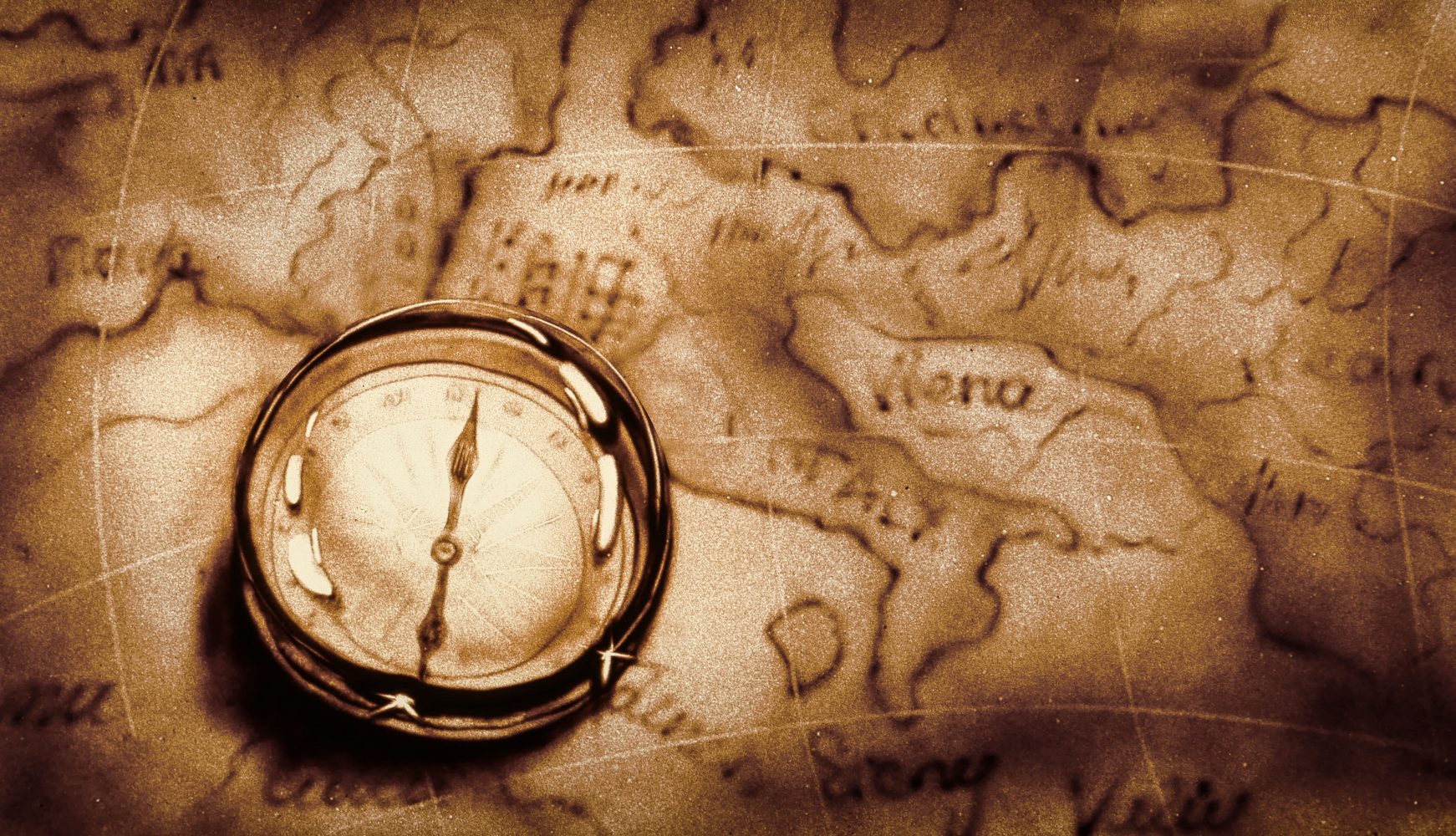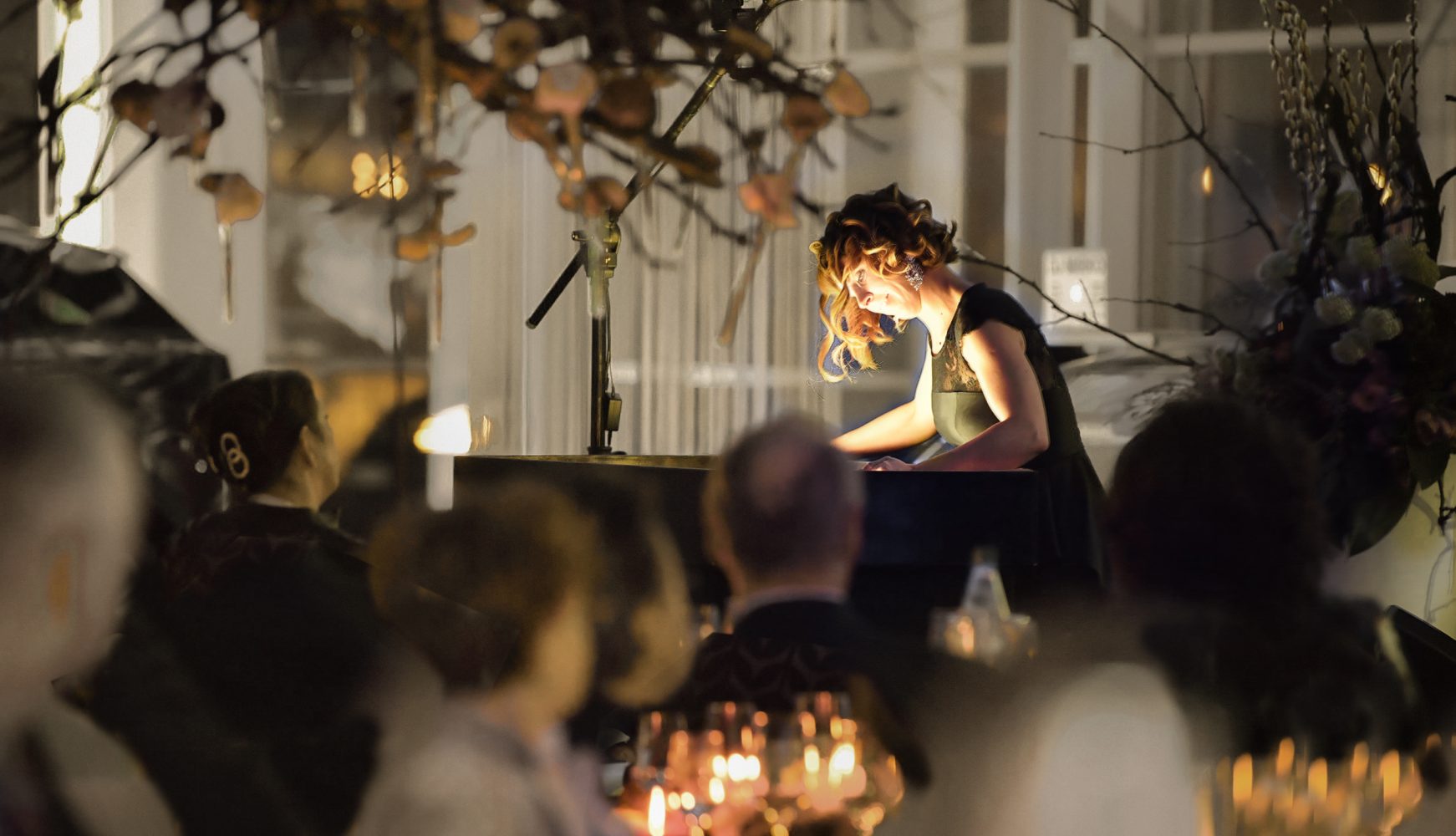WHEN MUSIC AND SAND BECOME ONE
EMOTIONS DANCING ACROSS THE SAND
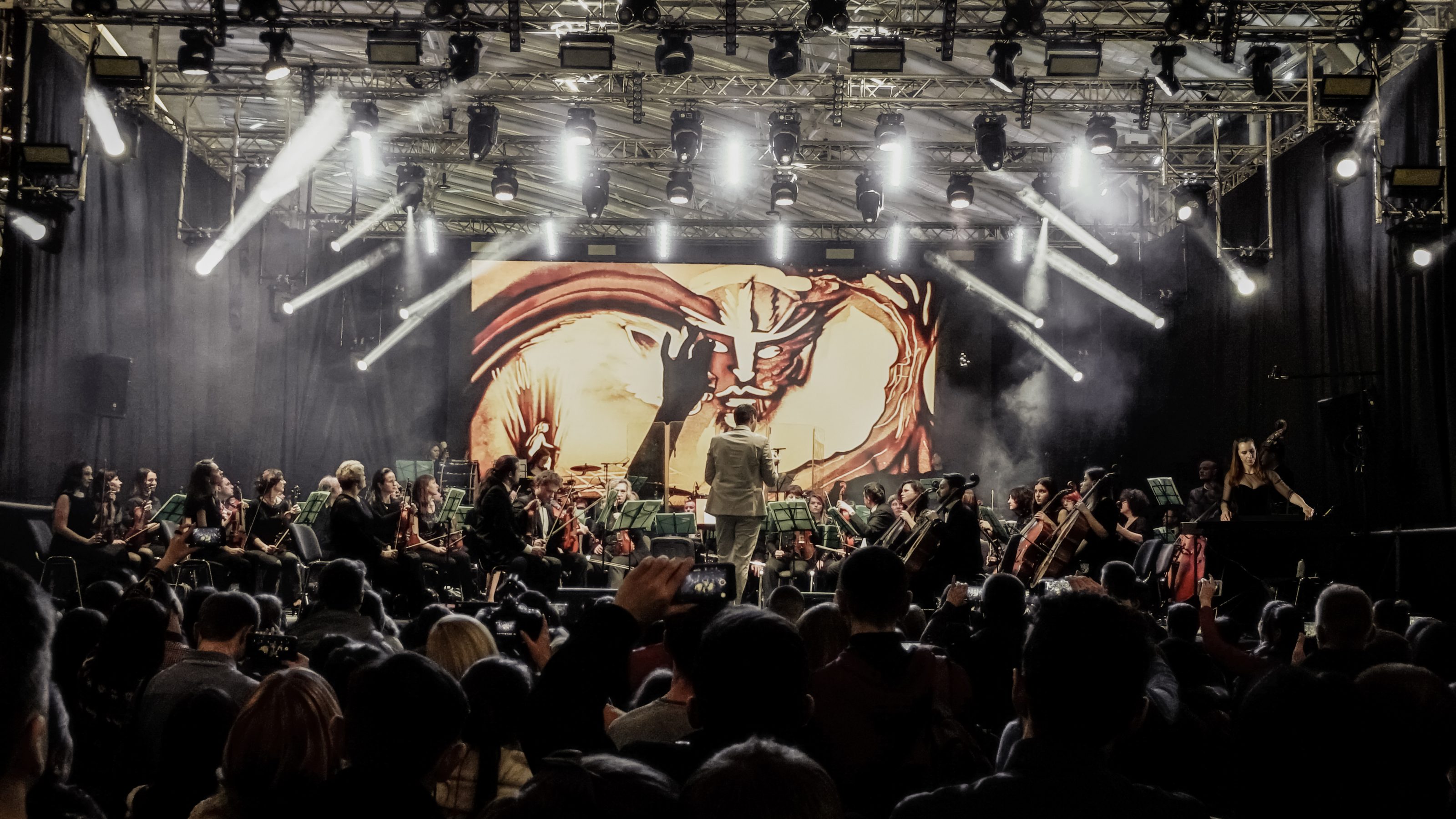
Here it is, the stage—hushed in anticipation. There sits a grand piano, and beside it, a pale rectangle of a table, where sand begins to flow as if from nowhere. It moves as if dancing, responding to the gentle, almost imperceptible movements of the artist’s hands, drawing blindly, without sketches, guided only by the echo of music in her soul.
JUST IMAGINE
AS THE SAND BEGINS TO FLOW
In the front rows, the audience has already drawn in its breath. The symphony begins with the quiet rustle of sand as the artist’s hand glides across the surface, creating a horizon—precise and delicate, like a violin’s first note. Beyond this fragile line, a new vision is born, and—oh, how unexpected!—the sand catches the sound of the strings, merges with a woodwind chord, and right before their eyes, a whole story unfolds. Mountains, rivers, trees rising skyward—all appear for an instant, for a single chord, only to dissolve and yield to a new harmony, a new scene.
Someone in the hall is already quietly moved to tears, touched by how each sand shape melts into the next, conveying the emotions of the music without a single word. The live art of sand animation is ephemeral, like the muse of inspiration itself—each scene exists only here and now, barely clinging to the tabletop, while the musical phrase lingers.
The conductor, like a magician, leads the orchestra forward, raising his hands—and the harmony fills the space. Under his sensitive guidance, the artist’s fingers glide over the sand, following the rhythm. With each chord, new worlds of sand come to life and vanish, taking the audience captive to the enchantment of art.
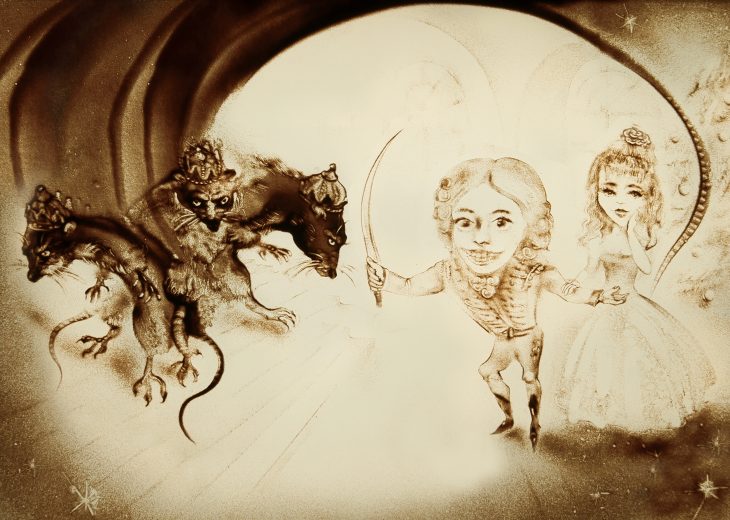
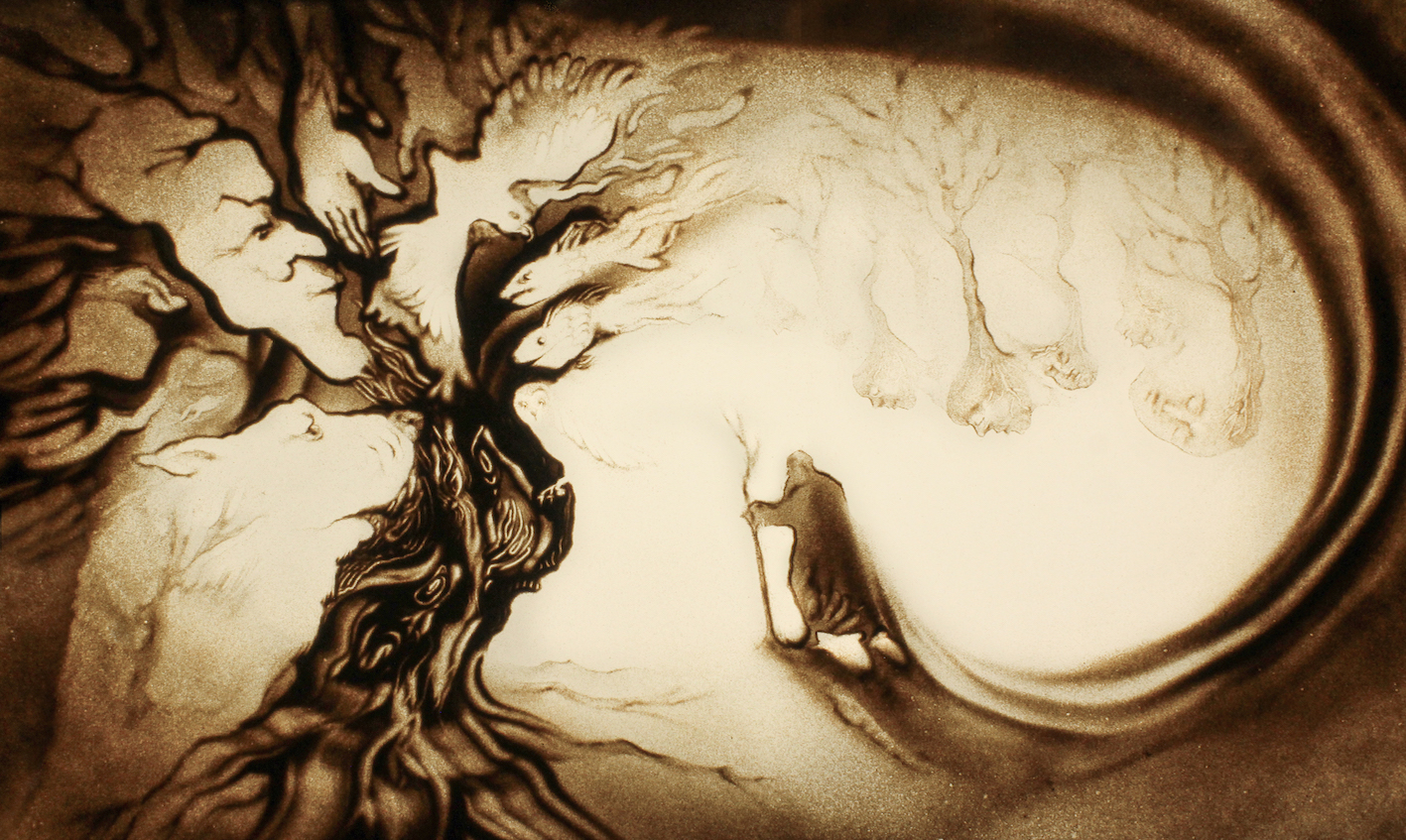
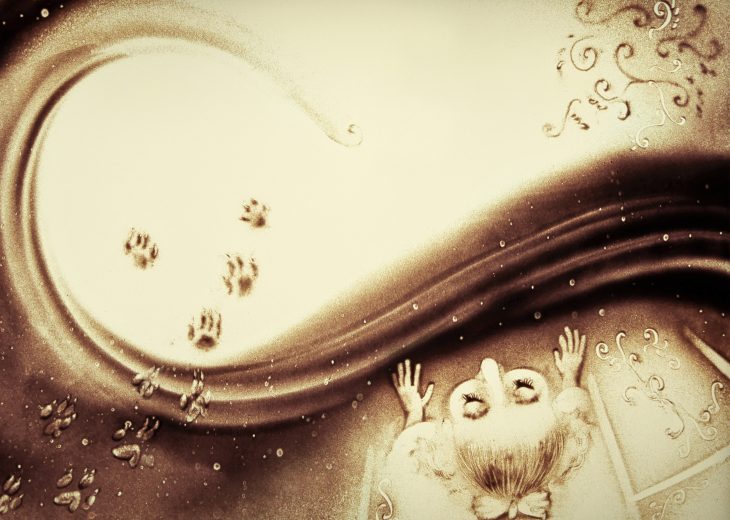
HOW THE ARTIST TAMES THE SAND
Let’s step into the workshop, where the air brims with inspiration, and silence is infused with images that come alive — here, sand is tamed. This free-spirited medium, witness to desert winds and vanished oceans over eons, yields to the artist’s hands. Sand is like a wild stallion, resisting constraint, yet her hands teach it to follow the lines, curve around contours, cascade gently or soar—mirroring scenes from her countless sketchbooks.
The creative journey begins with building the narrative. The artist selects key images as though unearthing ancient artifacts, with music as her guide. Sometimes, she lets intuition steer her through a maze of associations. Inspiration might arise from the deep calm of classic paintings, vivid scenes from children’s books, the graceful movements of animals, or a fluttering autumn leaf that caught her eye in a city park.
THE SAND HAS WITNESSED ERAS AND KINGDOMS PASS, STARS BEING BORN, AND SEAS VANISHING.
Next comes the meticulous staging of scenes — a step-by-step visualization of all transitions. With each layer, she draws what will become the dance of grains. The most delicate part of the magic lies in synchronizing her hands to the rhythm of the music. Here, nothing is left to chance — every movement is refined until image and melody flow as one.
